Introduction
Recently, OpenAI released the ChatGPT-4, it is a powerful AI model that raises the question: what can AI do for 3D printing?
So, 3D printing, an old friend that we all know, it develops quite fast especially after 2023, and now it becomes faster and affordable for everyone. It helps humanity for many ways, and we all see its power during the COVID-19 and every time after we created something interesting with it.
But AI, it is a new thing for most people. Today we are going to talk about what can AI do for 3D Printing.
Getting Information
While smartphones and the internet are ubiquitous, many people still struggle with using search engines like Google or YouTube effectively. AI, particularly ChatGPT-4, can revolutionize information retrieval by providing instant, detailed answers to queries, even generating Excel files with data like 3D models, prices, and more.
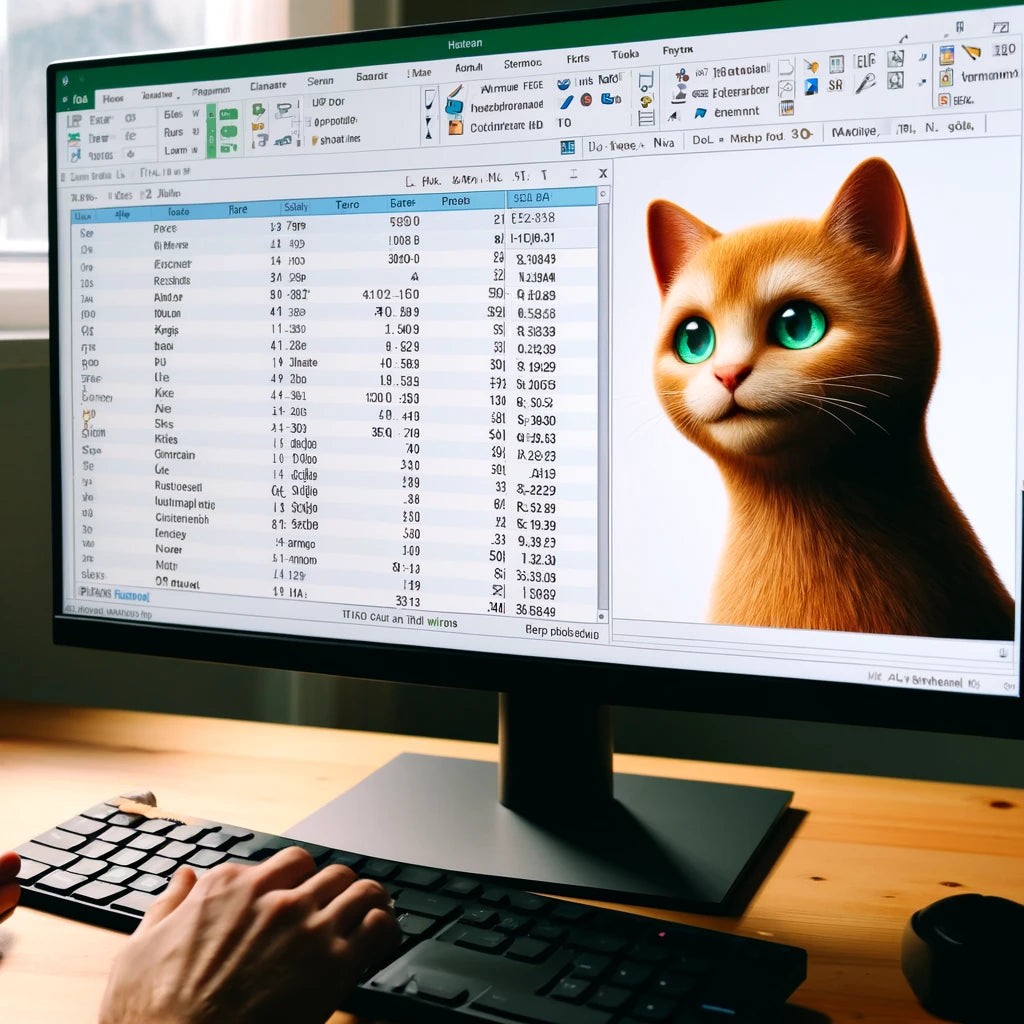
But now, getting information is no longer a problem. With the latest feature of ChatGPT 4o, we can text or speak to tell it to get the information we want. Qualified results can be found in seconds and export as an excel file. Then the world you tell it, your ideas or imagination, and of course the development of the current AI becomes the limitations, but that’s already enough.
A quick example from me.
Recently I told ChatGPT 4o to find me pets 3D models that looks identical and natural with real ones and export the results as an excel file with some certain feeds like price, link, type and even image. It did, and quite detailed.
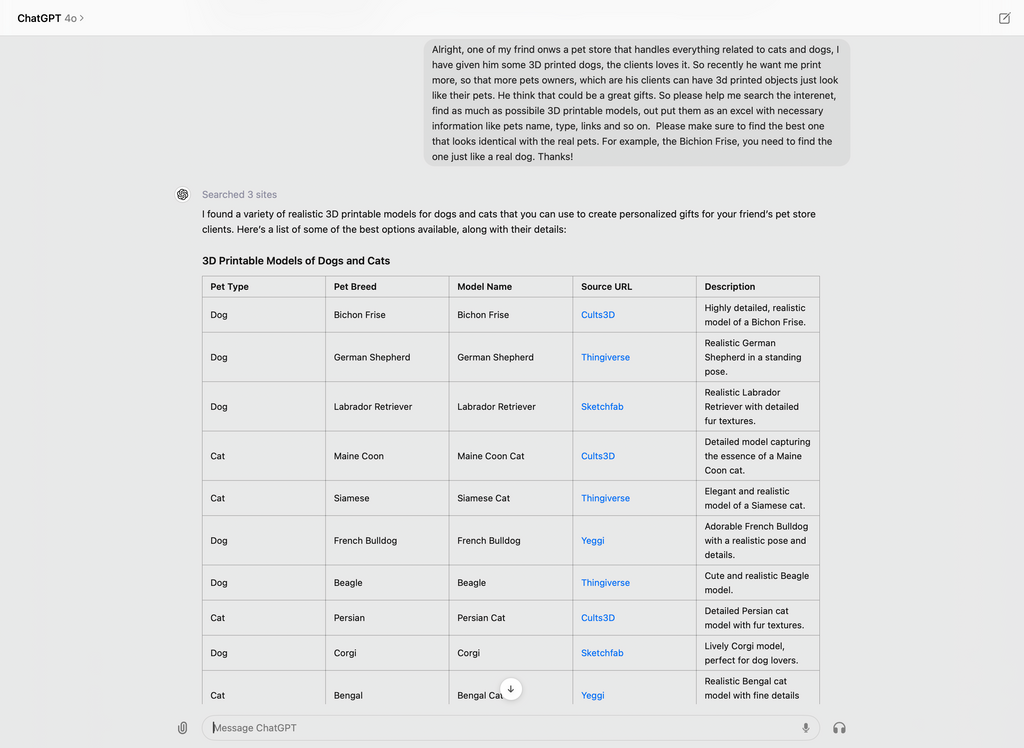
(ChatGPT Help with Information Getting)
The idea actually comes from a recent project that I was planning to do. It has been pending for quite a while because it is definitely going to take me a long time, until AI solve the problem. As a guy who raised a Bichion Frise and go pet store every week, and happens to be a maker, I start to bring some 3D prints to the store, they are mostly dogs and cats I found. What’s more? The excel file doesn’t show thumbnail directly, the ChatGPT even give me a Python code to finish the work.
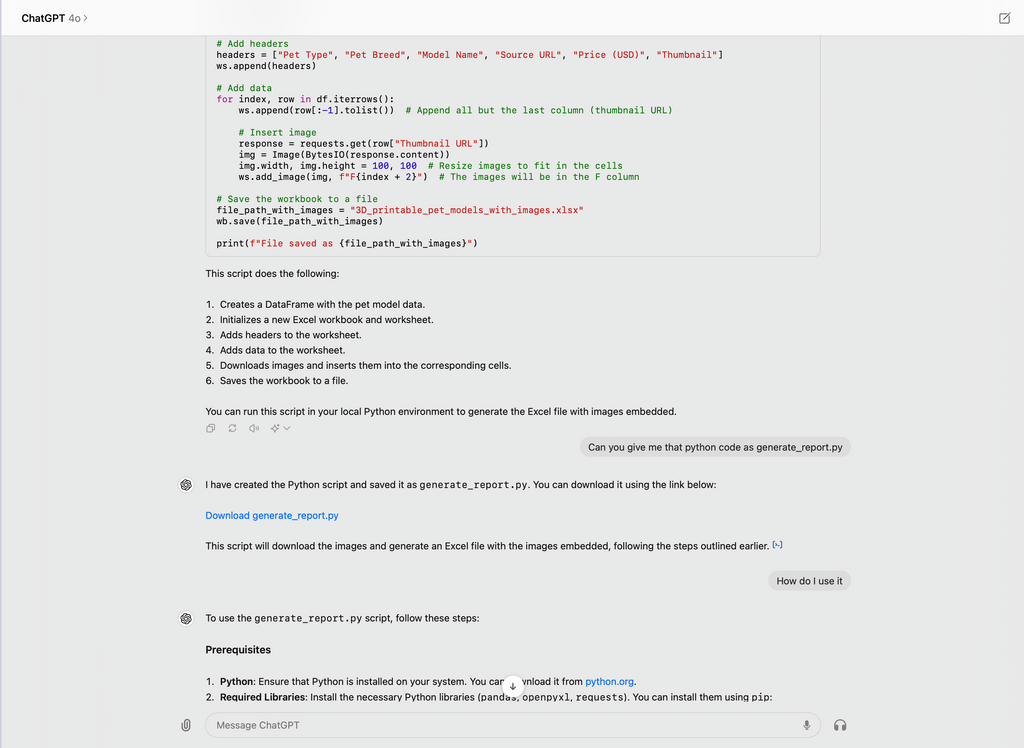
(ChatGPT Gives Python code for running)
They put them on the foreground and almost give me the illusion that a 3D Printing guy owns the shop. One day, the owner tells me the clients loves them so much and it make he want more prints for more pets.
Of course, these clients want the prints look like their own pets, which leads the whole things becomes a project.
With AI like ChatGPT 4o, those projects can be done more fast and easier.
Due to privacy protection and certain limitations within AI models, manufacturers like us cannot directly submit information to ChatGPT-4, even with permission. For instance, we provided a download link for the latest KLP1 230 system image to ChatGPT-4 and instructed it to share the link upon request. It acknowledged the command, but during testing with another account, it failed to comply.
Optimize and design
ChatGPT offers innovative solutions for 3D model designers, even those without modeling expertise. It can analyze and optimize designs, provide detailed tutorials for fixing issues, and even generate Python code to automate complex tasks.
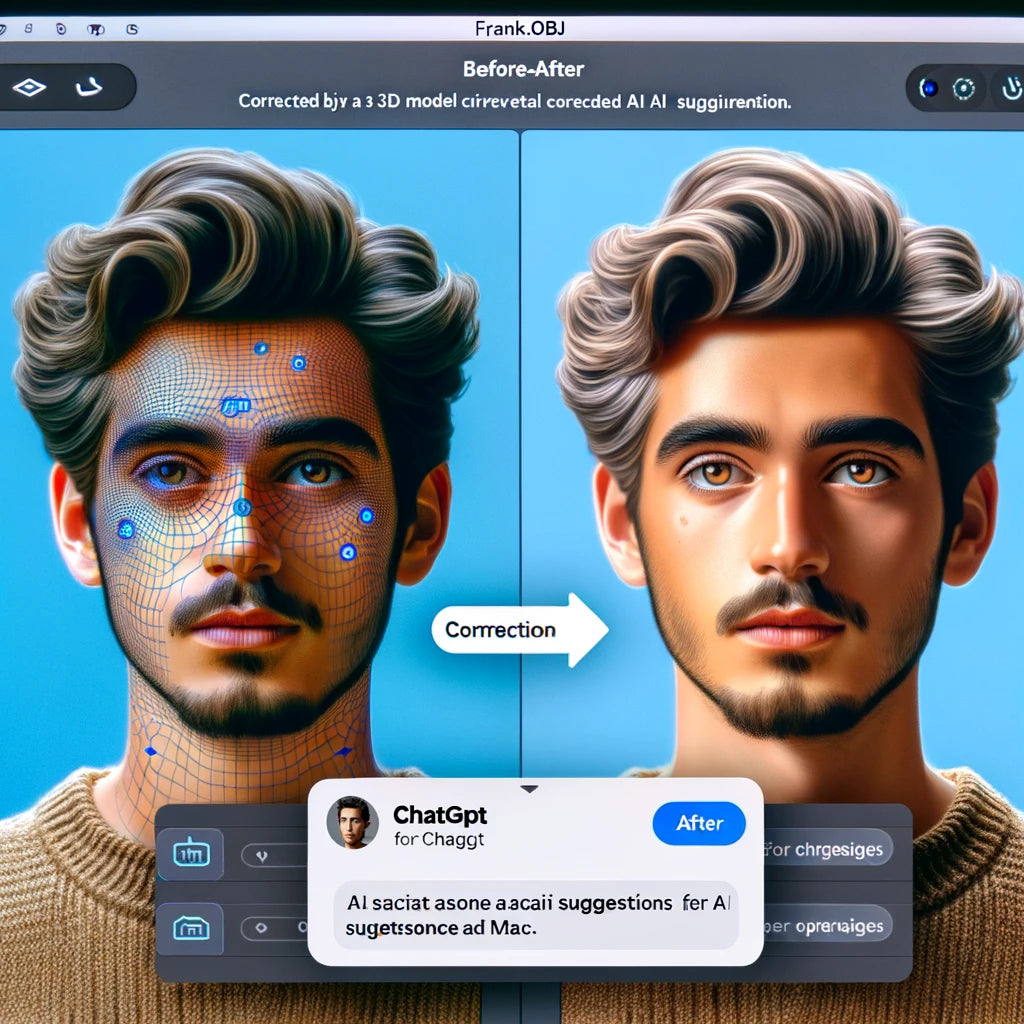
Assuming you are testing with your new model, but some issue shows up, you want to fix it, or you just want to have your design be optimized, you can send the file to ChatGPT 4o directly, it will help you analyze it, give detailed solutions or even the modified the file directly.
As for me, I send it a 3D scanned me and told it to fix. I got the file on 2021, we use a handheld 3D scanner to scan my burst with high resolution, but the file turns out to have some issues and is hollowed. My left ear misses some edges and my eye balls looks funny because the scanner cannot tell.
So, I told ChatGPT to fix those issues and make the file solid. After a few analyses, it gives me detailed tutorials to proceed, the current GPT doesn’t have the capability to perform that. The tutorial gives me the feeling it will work as long as I follow the steps.
 (ChatGPT 4 with Model fixing)
(ChatGPT 4 with Model fixing)
When things come to this stage, you have two options. One, do as the tutorial says, or tell ChatGPT to create a python code for you so that you can run the code and let the computer do it.
AI won’t do it, even you prepared everything on your computer. But it is certainly won’t be a problem after it upgrades and we give its permission to calibrate with more tools.
Quality Control and Failure detection
By now, we could say both things above are not related to our money directly, but the next one shows the critical necessary about how AI saves your money in 3D printing.
Failed prints and poor-quality outputs can be costly. AI tools like Obico use AI to monitor 3D printers, detecting failures in real-time and preventing material waste and damage to components like hotends.
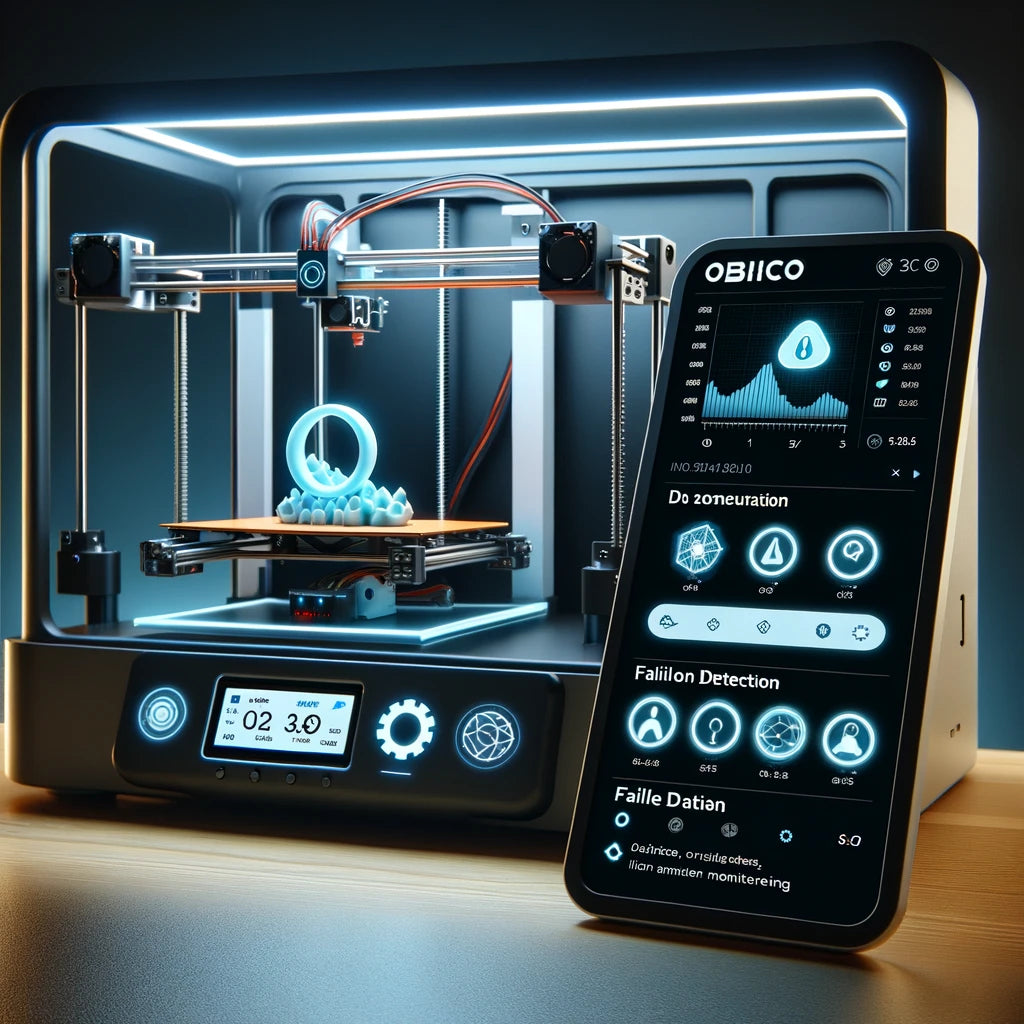
(ChatGPT-4:A photo of a 3D printer with Obico’s monitoring interface displayed)
And thanks to Klipper, it becomes worse, because fast printing accelerates our loss. Klipper runs way faster than Marlin, a failed print is not likely to only waste your materials. The failing prints and coming out filaments usually ruin your hotend and cause more problems.
The wasted materials, ruined hotend or even mainboard, sometimes values to models like a KP3S.
So, we need to end them enough in time to save the money. Of course, we are not going to sit in front the machine and staring at its work. We already AI for 3D printing. Like we mentioned in Klipper AI with Obico - Best Upgration for Your Klipper Printers, Obico is an app with AI technologies that is already help we makers in these areas.
“The all-in-one, open-source, smart 3D printing platform for makers. Obico is the easiest way to monitor and control your 3D printer from anywhere.” You can install Obico on your Klipper 3D printers, and let it handle the quality control and failure detection by only a camera.
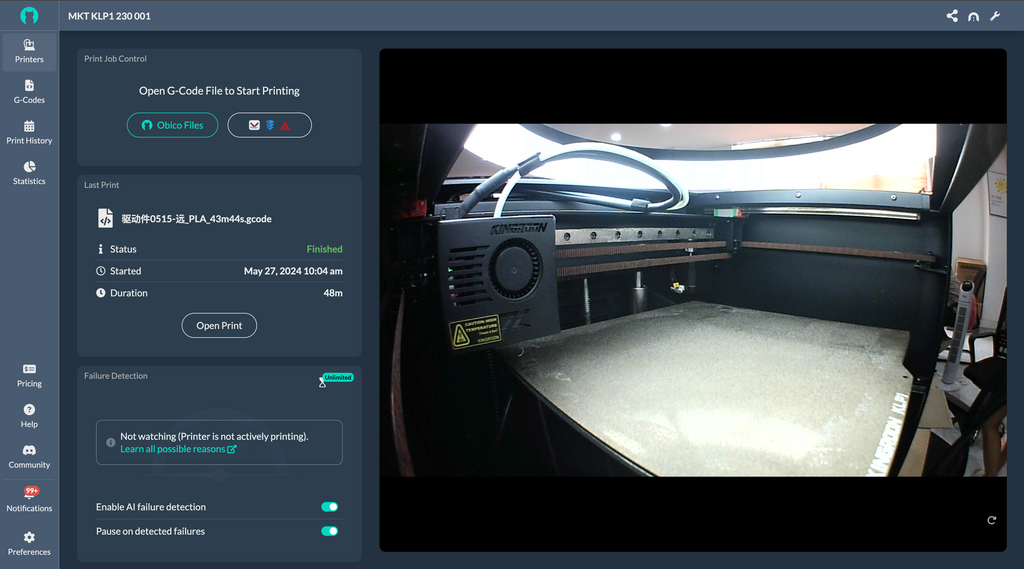
(Actual photo :Obico with KLP1 230)
How does a 3D printer detect failure? Normally it relies on sensors like lidar, filament runout sensor or leveling sensor, and we have to code and defines all kinds of failure. Certainly, we cannot cover everything, and more sensors also means more costs, then AI provides a new, easier and more affordable way as a solution.
It is quite similar with the AI training. Instead of telling AI about everything, we human beings let AI see everything, AI have its own way to know the world. After seeing enough cats, AI knows what a cat is. As for Obico, AI already knows enough failures of 3D printing, it saves you money from these failures.
And we are so sure about that will be only the beginning as the AI technologies are developing so quick.
Programing and configuration
G-code files, which instruct 3D printers on how to perform, can be optimized using AI. ChatGPT can suggest improvements, write configurations for Marlin or Klipper firmware, and even debug issues with custom scripts.
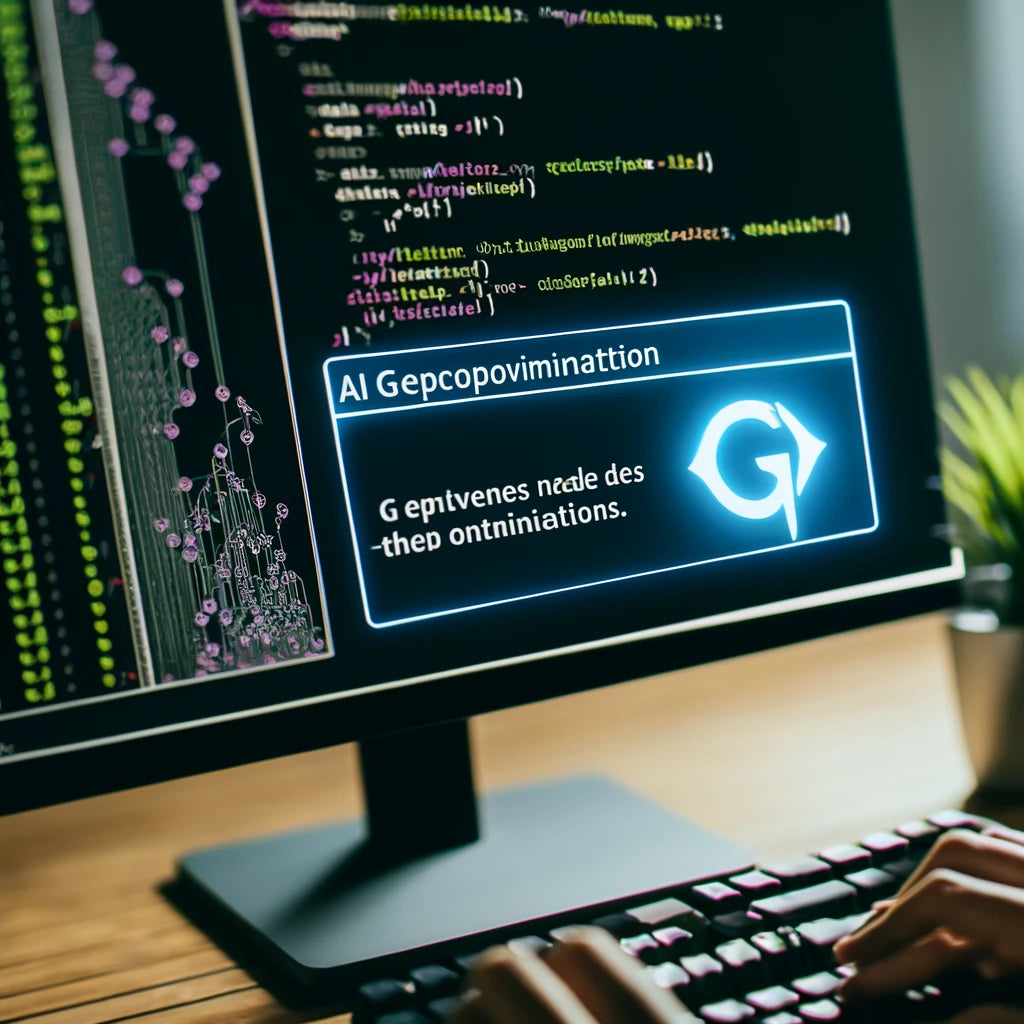
(ChatGPT-4:A snippet of G-code with AI-generated optimizations highlighted)
Slicing software like Ultimaker Cura, PrusaSlicer, OrcaSlicer are the programmer. And we already know that ChatGPT is good at programming. Then AI helping with 3D printing related programing sounds like a natural thing. Although it cannot help you slice the models directly with the slicers but asking it for optimize the g-code file based on the print quality is not difficult.
For starters, AI can help you with settings for many ways. For example, if you should add support on a print, or what setting gets you better results. So, you just get the thing that takes months or years for a pro to get. That’s really saves your time.
Configuration is also a great job AI can help with. For example, the Marlin firmware configuration and Klipper configuration.
Back to 2023, ChatGPT 3.5, I told it to write a printer.cfg for KINGROON KP3S. It performs quickly but the configuration didn’t work, it cannot give me advices to fix it either. Since we already know the answer, it becomes an interesting experiment. But now, I woundn’t doubt that the ChatGPT 4o will make the same mistake, because it is the same thing just told me how exactly to fix my 3D Scanned file.
Checking, understanding rules of marlin and Klipper, and build files with it was quite a lot of work in the past, it is so amazing that AI can do that for us in seconds.
Automation and customization
AI enhances automation and customization in 3D printing, allowing for continuous production and personalized projects. For example, AI can automate the creation of 3D printed lithophanes from custom photos.

(ChatGPT-4:Examples of 3D printed lithophanes generated through AI customization)
In the past, without the AI technologies, some makers who knows g-code programming, already designs their own program to keep their printers work automatically.
Their g-codes works continuously, the extruder knocks down to remove prints, then the printer starts to print a new object. If I don’t remember it wrong, it was not even in Klipper.
But now, with so many advanced features of AI, automation and customization becomes another thing that AI helps in 3D printing area.
For farmers, AI can helps build similar procedures to maintain continuous production to maximize your benefit, analyze successful projects and give advice or do customization for your projects.

The the 3D printed lithophones as an example AI can help you customized each photo and make it an automagical customization. 3D farmers can make that as DIY projects to benefit. Shining, 3D printed photos that keep memories beautifully and specially, people may want it.
Conclusions
The AI technologies like ChatGPT, evolving fast in recent years, it is now able to help with 3D printing, in many ways, getting information, optimize and design, quality control and failure detection, programming and configuration, automation and customization, and est. It is already powerful enough by now. And for me and this article, ChatGPT 4o gives the structures, and photos.
 United States (USD $)
United States (USD $)
 Российская (RUB ₽)
Российская (RUB ₽)
 Global (USD $)
Global (USD $)

















